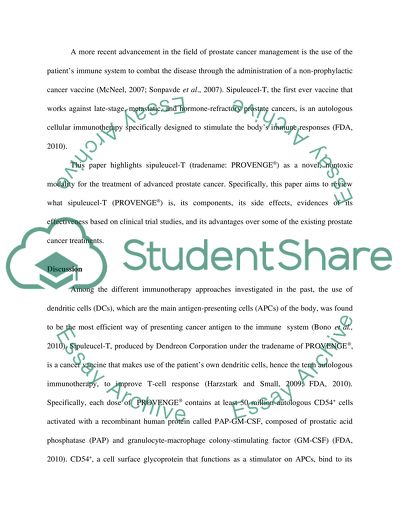Cite this document
(“The New Advancement in Treatment of Prostate Cancer - PROVENGE Term Paper”, n.d.)
Retrieved from https://studentshare.org/environmental-studies/1419745-the-new-advancement-in-treatment-of-prostate
Retrieved from https://studentshare.org/environmental-studies/1419745-the-new-advancement-in-treatment-of-prostate
(The New Advancement in Treatment of Prostate Cancer - PROVENGE Term Paper)
https://studentshare.org/environmental-studies/1419745-the-new-advancement-in-treatment-of-prostate.
https://studentshare.org/environmental-studies/1419745-the-new-advancement-in-treatment-of-prostate.
“The New Advancement in Treatment of Prostate Cancer - PROVENGE Term Paper”, n.d. https://studentshare.org/environmental-studies/1419745-the-new-advancement-in-treatment-of-prostate.


